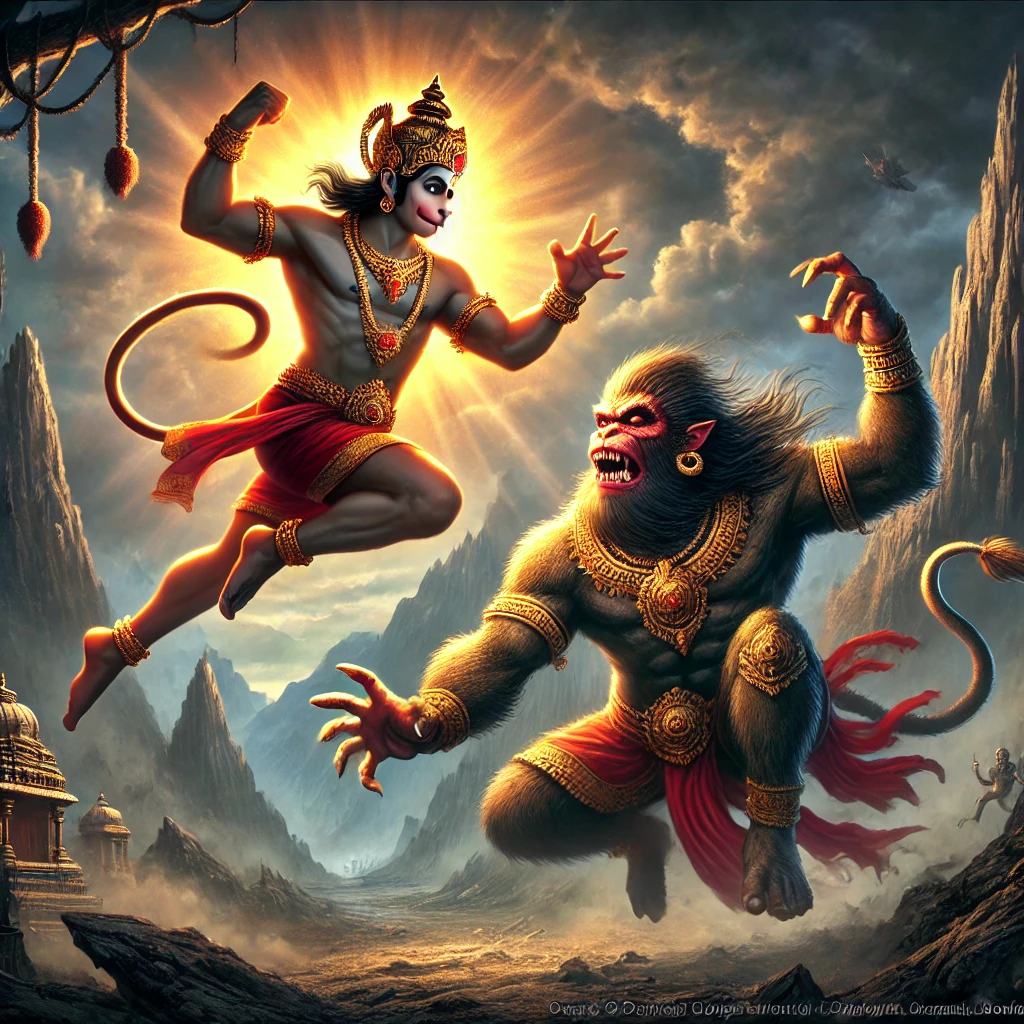Table of Contents
Introduction
Welcome to Bedesii.com, where we dive deep into the wisdom and teachings from sacred epics. Today, we bring you an inspiring tale: “How Lord Rama Broke Hanuman’s Pride.” This story is not just a captivating narrative but a powerful lesson in humility, divine strength, and the nature of true devotion. As we explore Hanuman’s journey from pride to selfless service, prepare to be enlightened by insights that highlight the spiritual essence of surrender and the boundless grace of the divine. Enjoy this enriching experience!The Story of Hanuman’s Pride and Rama’s Humble Lesson
In the sacred lands of ancient India, the epic tale of Lord Rama’s journey to rescue his wife, Sita, from the demon king Ravana remains one of the most celebrated stories. Among the numerous episodes, one story stands out, teaching a lesson on humility, devotion, and the importance of surrendering one’s ego to the divine.
The Divine Plan: Rama’s Intent to Build a Bridge
As Lord Rama prepared to embark on his journey to Lanka to defeat Ravana, he knew the importance of divine blessings for success. He decided to install a Shiva Lingam—a representation of Lord Shiva—on the site where the bridge would begin. This ritual would invoke Shiva’s blessings, ensuring that the bridge construction would proceed smoothly. The task of bringing a Shiva Lingam fell upon Hanuman, Lord Rama’s most devoted and powerful ally.
Hanuman’s Pride Takes Root

Hanuman, known for his incredible strength and speed, was honored to be chosen for this mission. With a heart full of devotion, he set out for Kashi (modern-day Varanasi), the holiest of cities and a spiritual center dedicated to Lord Shiva. His journey to Kashi was swift and triumphant. Hanuman, who had always been aware of his divine powers, began to reflect on his abilities. As he traveled, he thought about the countless feats he had accomplished for Lord Rama and how no one could match his devotion and power.
Gradually, his reflections gave way to pride. “I am the strongest and the fastest,” he mused. “There is no one as devoted to Lord Rama as I am. Surely, even this task of fetching a Shiva Lingam is evidence of my greatness.”
Rama’s Awareness and Concern
Back at the site of the bridge, Lord Rama sensed that Hanuman’s pride was growing. Being omniscient, Rama understood that even the most devoted can sometimes fall prey to ego. To teach Hanuman a valuable lesson and remind him of the true source of his power, Rama prepared an alternative plan.
The auspicious time for the installation of the Shiva Lingam, known as the muhurta, was drawing near. When Rama saw that Hanuman had not yet returned, he turned to Sugriva and the other members of his army. Rama expressed his concern that the precious moment would be missed, and with that in mind, he decided to create a Shiva Lingam himself, molding it out of the sand at the water’s edge.
Hanuman’s Return and Surprise
Moments later, Hanuman arrived, the Shiva Lingam from Kashi held triumphantly in his hands. His heart swelled with pride, eager to present the divine object to Rama and earn his Lord’s praise. But to his astonishment, Hanuman saw that a Shiva Lingam had already been installed. Confused and hurt, he approached Lord Rama and questioned him, “Lord, why did you install another Lingam when you entrusted me with this task? Did you not trust me to complete my mission?”
Rama, with his usual gentle smile, replied, “Hanuman, the auspicious time was about to pass, and we could not afford to delay the ritual. However, if you wish, you may replace this sand Lingam with the one you have brought.”
The Test of Strength
Hanuman, determined to prove his worth, approached the sand Lingam with confidence. He grasped it firmly, ready to uproot it and replace it with the Lingam he had brought from Kashi. But no matter how hard he tried, the sand Lingam would not budge. Hanuman used all his strength, summoning the might that had once lifted mountains and defeated powerful demons. Yet, the Lingam remained immovable, as though it were anchored by the universe itself.
Sweat poured down Hanuman’s face as he struggled in vain. The entire assembly of vanaras (monkey warriors) and the other divine beings watched in amazement. How could Hanuman, the embodiment of strength and devotion, fail to move a simple Lingam made of sand?
Realization and Humility
At that moment, Hanuman’s pride dissolved. He fell to his knees, his heart heavy with shame and humility. He realized that his strength, speed, and all his abilities were not his own. They were gifts from Lord Rama, and without Rama’s grace, he was powerless. Tears of repentance filled his eyes as he bowed before Rama and sought forgiveness for his arrogance.
Lord Rama, ever compassionate and loving, placed his hand on Hanuman’s head and said, “Hanuman, your devotion is pure, and your heart is filled with love for me. But remember, all power comes from the divine. It is only through surrendering your ego and recognizing the true source of your strength that you can remain in harmony with the divine will.”
Spiritual Insights from the Story
- The Illusion of Self-Power: Hanuman’s story is a powerful reminder that our talents and abilities, no matter how extraordinary, are not solely our own. They are divine gifts meant to be used in service to a higher purpose. The moment we become attached to our achievements or take pride in our capabilities, we forget the source from which they flow.
- The Importance of Humility: Even the greatest of devotees, like Hanuman, can fall into the trap of pride. The story emphasizes that humility is not just a virtue but a necessity for spiritual growth. True humility comes from acknowledging that we are instruments of the divine, and without divine grace, we are nothing.
- Rama’s Wisdom and Compassion: Lord Rama’s approach to teaching Hanuman a lesson is filled with wisdom and love. Instead of punishing Hanuman, Rama used the situation as an opportunity for spiritual growth. This highlights the concept of Leela (divine play), where the Lord uses various means to guide his devotees on the right path.
- The Role of Ego in Devotion: Hanuman’s initial pride was not out of selfishness but a subtle form of ego rooted in his devotion. This story illustrates that even spiritual pride, which can be more dangerous than material pride, needs to be overcome. True devotion is ego-less and is about complete surrender to the divine.
Historical and Cultural Significance
The story of Hanuman and the Shiva Lingam is deeply rooted in the spiritual traditions of Hinduism. It emphasizes the significance of the Shiva Lingam as a symbol of divine energy and the importance of rituals performed at the right time (muhurta). Kashi (Varanasi), where Hanuman collected the Shiva Lingam, is considered one of the holiest cities in India, believed to be blessed by Lord Shiva himself.
Hanuman’s journey to Kashi also symbolizes the pilgrimage that devotees make to sacred sites, seeking blessings and spiritual strength. The story reinforces the belief that no matter how spiritually advanced one is, the ego must always be kept in check to remain close to the divine.
The Lingam at Rameshwaram
It is said that the sand Lingam installed by Lord Rama still stands at Rameshwaram, one of the most revered pilgrimage sites in India. Devotees from all over the world visit the Rameshwaram temple to pay homage to the Lingam, which serves as a reminder of this profound story and the lessons it imparts.
Conclusion
The story of Hanuman’s pride and Lord Rama’s gentle lesson is a timeless narrative that speaks to the core of spiritual practice. It teaches us that humility is the foundation of true devotion and that all strength comes from the divine. By surrendering our ego and recognizing our limitations, we become open to divine grace and can serve selflessly.
Hanuman, despite his momentary lapse into pride, remains the epitome of devotion and strength. His unwavering love for Rama and his ultimate realization of the true source of his power make him an enduring symbol of selfless service and divine humility.







